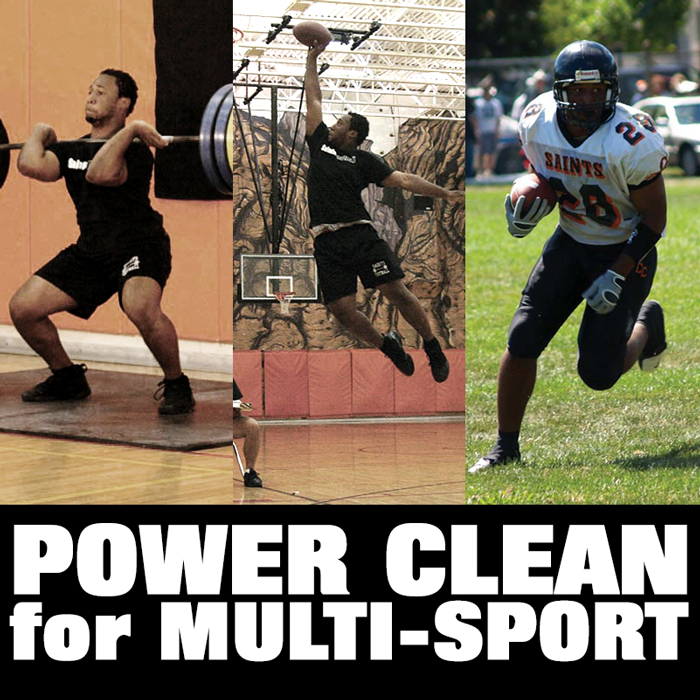A CLOSER LOOK AT THE POWER CLEAN

Why BFS considers this lift a must for serious athletes
By Kim Goss
For many years this BFS core exercise has been attacked by those who thought it had little value for an athlete, by those who thought it was dangerous and by those who thought it was too difficult to teach. They were wrong, and the survival of the exercise has benefited those who want to run faster, jump higher and be overall more powerful.
A recent survey involving 137 Division I coaches found that 85 percent used Olympic lifting movements such as the power clean to train their athletes. In the NFL, that percentage was 88 percent. High school football programs are also catching on, especially the ones that enjoy a tradition of victory. I know this from my personal experience as a strength coach.
When I was a strength coach for the Air Force Academy, I enlisted the help of the university’s math department to conduct my own experiment to determine which strength training exercises had the highest correlation to the ability to play football. I compiled the results of the top three athletes on the depth chart for each position, and their maxes on our core and auxiliary exercises, for a three-year period. For defensive and offensive linemen, and in fact for almost all positions, the exercise that had the highest correlation to playing ability was the power clean. The reason is simple. Linemen need to be able to express a high level of strength quickly. Because the power clean allows you to accelerate your limbs over a large range of motion, it’s one of the best exercises for improving what sport scientists call the rate of force development. This is in contrast to conventional power lifts such as squats, which for safety reasons require more time to decelerate the weight – in fact, the only time maximum force can be exerted is at the beginning of those exercises. And there is practical evidence in peer-reviewed journals supporting the idea that power cleans are a superior exercise for developing power.
For example, in 2004, researchers at the Department of Health and Exercise Science at the College of New Jersey conducted a 15-week study on weight-lifting exercises involving 20 Division III college players. One group focused on powerlifting exercises such as the squat, while the other group focused on Olympic lifting exercises such as the power clean. Although both groups showed improvements in the vertical jump, a standard test for athletic power, the authors said, “Results suggest that OL can provide a significant advantage over PL in vertical jump performance changes.”
For those athletes seeking to improve muscle mass, the power clean is also an effective exercise. Let me explain. There are essentially two types of fast-twitch muscles fibers that can increase in size: the Type IIa and the more powerful Type IIb. The Type IIb fibers respond better to explosive lifts such as the power clean; and much of the massive development of the traps, lower back and hamstring muscles on Olympic lifters is due to the development of Type IIb fibers. So if you want as much functional muscle mass as possible for sports, you need to perform the power clean.
But what about the idea that the power clean is dangerous? Again going back to my days at the Air Force Academy, I found that data collected from our athletic trainers showed that the total number of injuries for the first five years I coached there had decreased by 60 percent! I was the person solely responsible for designing the workouts for the football team, and one of the features of my workout programs was extensive use of the power clean. If this lift was so dangerous, how can one account for such results? I have a theory about this – and a story.
I was talking to a friend of mine, a bouncer who also competed internationally in judo, and he said that in a bar fight between a boxer and a martial artist, a boxer would almost always win. The reason, he explained, is that a martial artist could not take a punch, at least not to the extent that a boxer could. In effect, the nature of their sport was such that the boxer learned how to minimize the force of a punch – they had to, as in training they are continually receiving blows to the head. In contrast, martial artists seldom strike each other hard enough in the head to develop this skill.
Likewise, during a power clean the athlete not only must explosively lift the weight but also must catch it. In effect, doing power cleans teaches the athlete to rapidly control the impact, a.k.a. disrupted forces, that occur during the lift. When you consider the ever increasing numbers of athletes suffering ACL injuries, you can see how valuable it is to be able to handle the dynamic, disrupted forces that occur to the ankle and knee during athletic competition. Further, the faster an athlete can handle these disrupted forces, the quicker they will be able to move on the court or in the field.
Finally, the Olympic lifts are “economical” exercises, meaning that they work many muscle groups simultaneously. To achieve a similar training effect with conventional exercises, an athlete would have to perform a leg press, back extension, calf raise, shoulder shrug, upright row, and biceps curl – and even then they would be neglecting a few muscles. Time is a major limiting factor in many athletic programs, so it’s important to use exercises such as the power clean that give you the most bang for your buck.
Is the power clean difficult to teach? Certainly not, if you have the proper educational materials and coaches who know how to teach it. BFS currently gives more than 400 clinics a year to young athletes, and has been doing so for over 30 years. The power clean is taught in all these clinics, and we often see athletes who have never performed this exercise come away with sound technique that will quickly lead to gains in athletic performance. Further, at our certification clinics, we ensure quality instruction, because coaches must show not only that they can perform the power clean at these clinics but also that they can teach it.
Despite its critics, the power clean has proven to be an exercise that can be safe, easy to teach and is one of the single most important exercises for achieving physical superiority.
